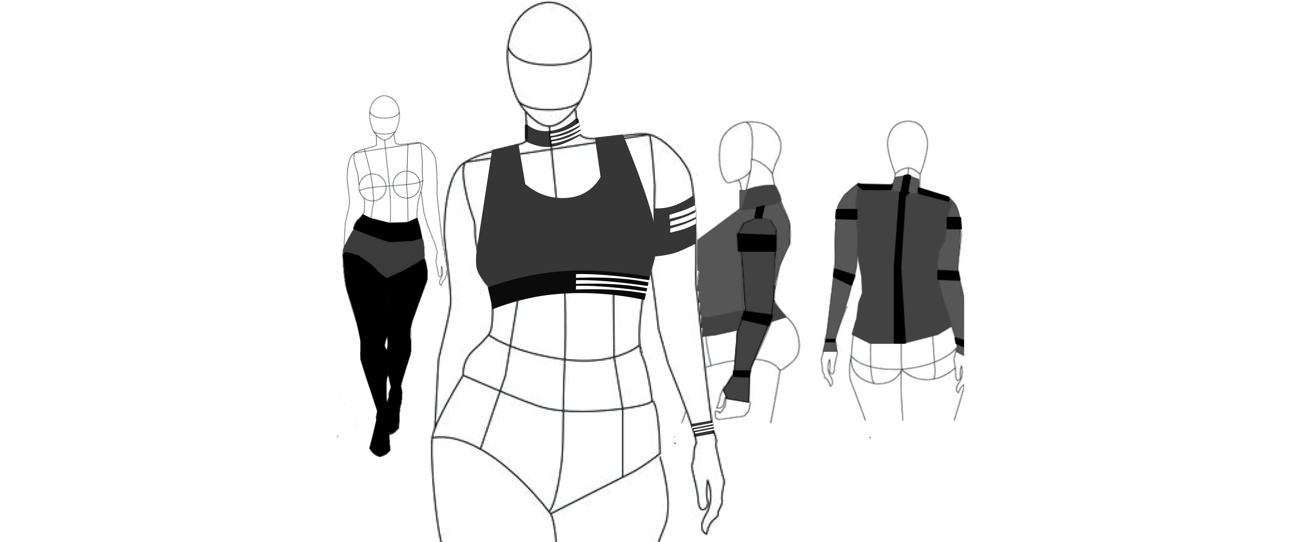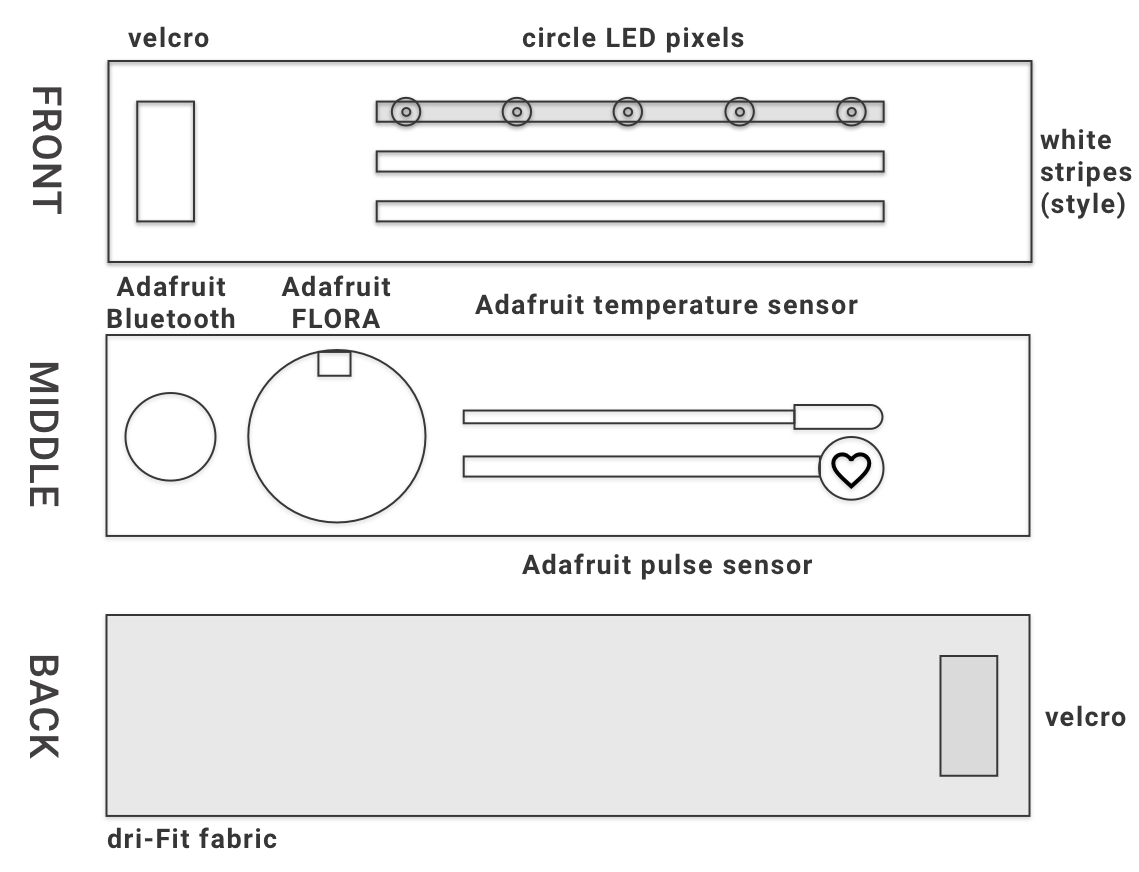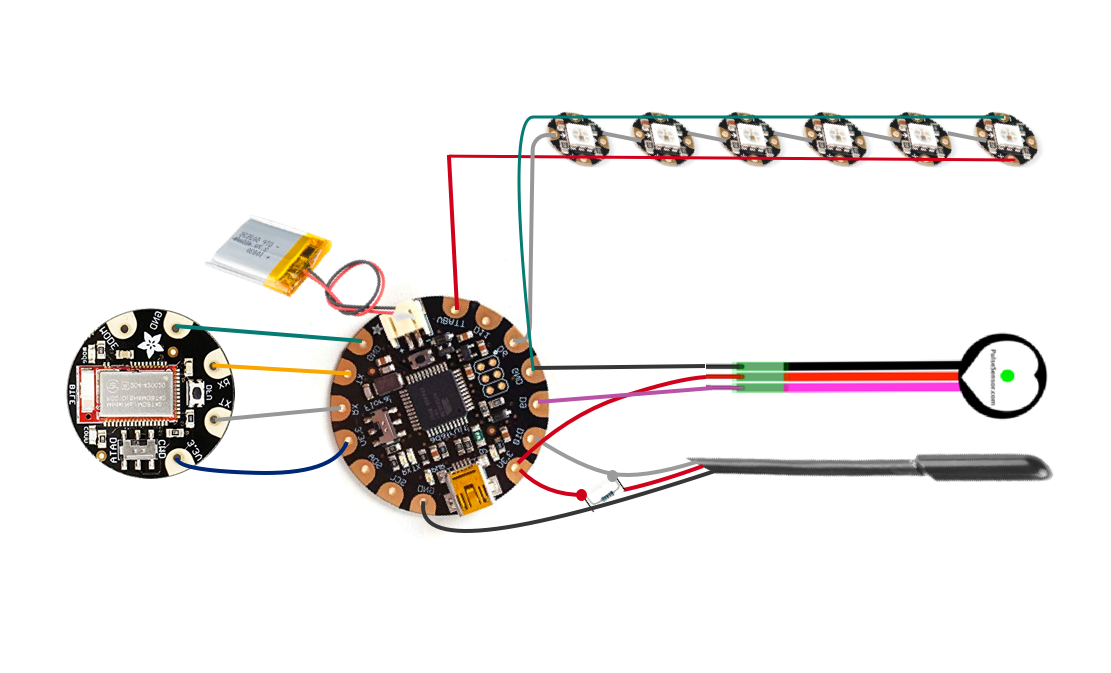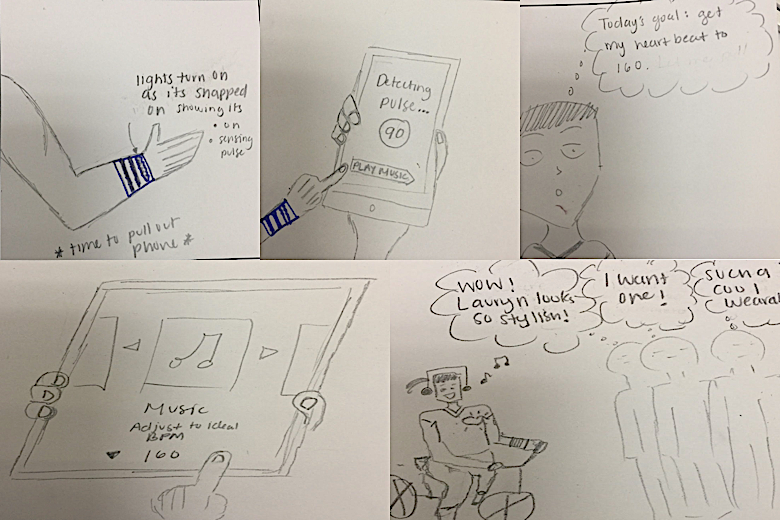Goals
Seamlessly integrate thin, flexible, fashionable materials and electronics directly to a user’s body for daily use
Bring more awareness and introspection for the body
Instigate creative expression of individuality through wearable technologies
Use music to establish a more concrete connection between the senses and ones body
Solution
iSomatic is a wearable intended to bring more awareness to our bodily state while using music as a representation as well as a form to manipulate these different states. We gather bodily data through wearable technology in which we aim to make the wearables as fashionable, non-intrusive, and modular as possible. The bodily data is then translated to the music selection to enhance the wearers experience with their body and their biofeedback activity at hand. We designed the wearable to display led lights providing a visual representation of the temperature for social activities as well as for aesthetic. iSomatic not only allows for an exploration of body data leaving the control to the body, but also allows the user to get conscious control again by adjusting whether they’d like to “warm” or “cool” music.

Design Process
Concepts
The intersection of soma, the body, and aesthetics, sensory appreciations triggers discussion about the meaning of our bodily experience and human intersubjectivity. We not only wanted to emphasize how our body becomes the source of aesthetic qualities for design, but also explore ways to increase our body awareness so we can “become more perceptive and aware in the physical world in which we live and act.”
Hot & Cold
We found the semantics of hot and cold evocative in our work. The words have a lexical relationship, acting as gradable pairs with no absolute scale. Hot and cold is used in many contexts including weather, physical sensations, emotional states, food, and even Marshall McLuhan’s media theory. We found the terms to be a parallel to how our body temperature works with music. Heat can be intimate and skin-close, while coolness can be less invasive than heat, but rather welcoming somatic response and triggering interrogations about our bodily experience.
Research Papers
"Most digital musical interfaces have been designed as objects separated from the body, often consisting of hard components such as plastic knobs. Rather than tackling this using wearable controllers that are attached to the body, we propose to design sonic controllers that work more closely to the body using garments incorporating electronic textile or e-textile." — Tangible, Embedded, and Embodied Interaction '18
Social Fabric Fitness
"SFF provides a glanceable, shared screen on the back of the wearer’s shirt to increase awareness and motivation of group fitness performance. Our qualitative findings indicate that SFF improves awareness of individual and group performance, helps groups stay together, and improves in-situ motivation." — Makeability Lab
Adaptability & Physiology
"Although clothing textiles continue to improve in their performance to expel or retain heat for comfort, and are becoming ”smarter” with embedded sensor technologies, our clothing are still not capable of determining the comfort of the user. People still need to actively put on or take off layers of clothing to regulate their comfort." — UbiComp/ISWC'15 Adjunct
User Research

Storyboards
Surveys
To learn more about the user experience, we conducted surveys on sportswear and the most used wearable FitBit on our school students, who meet our checklist as our audience.
Visual Design



Prototyping
Development Tools
Adafruit BlueFruit LE Connect, Apple Script Editor, Arduino Desktop IDE, Quicksilver, Spotify
ElectronicsArduino FLORA, Arduino Flora BlueFruit, Arduino Flora NeoPixels, Lithium Ion Battery, Pulse Sensor Amped, through-hole resistor, Waterproof Digital temperature sensor
Fabrication Materialsconductive thread, dri-Fit fabric, ribbon, sewing machine, conductive tape, velcro

p1
regular cloth, one LED, no sewing, 3V

p2
dri-Fit cloth, four LED pixels, sewing, Arduino UNO, 5V, pulse sensor

p3
dri-Fit cloth, five LED pixels, sewing, AdaFruit Flora, BlueFruit, 3V, pulse andvtemperature sensor
HCI Lab Open House & Weissman Foundry Fellowship
Future Work
The aesthetic of the wearable is significant to this project because the self expression regarding wearable technology has been limited to jewelry or accessories. While these are areas we will still be exploring, we want to focus on modularity by expanding the wearable to other body parts including sports bras, chokers, socks, or leggings. Furthermore, we would be executing music from a larger music source to allow more variety of music and expanding our categories. As we continue exploring somaesthetic wearables, we believe in discovering new ways of implementing multisensory feedback and physiological data.







